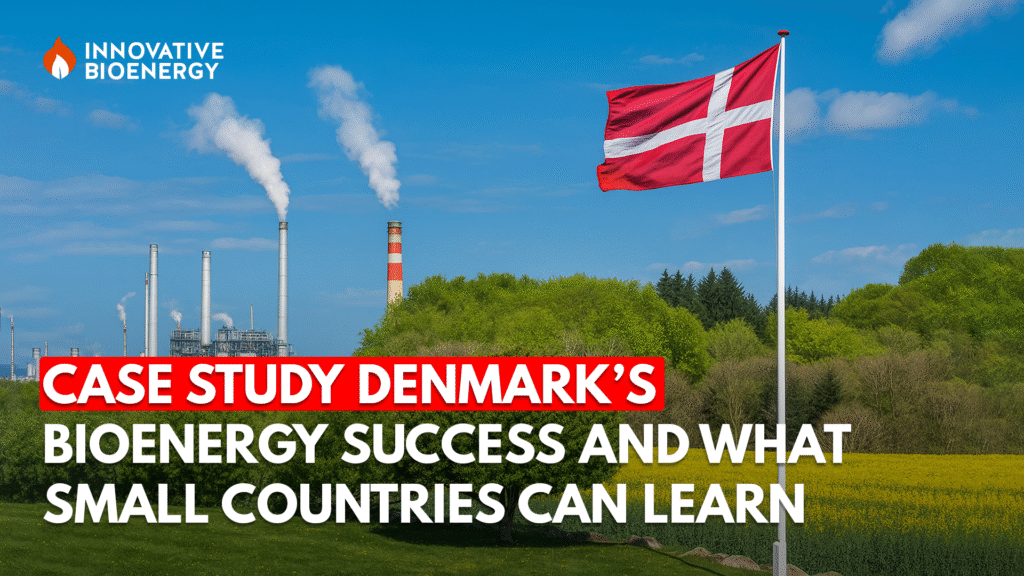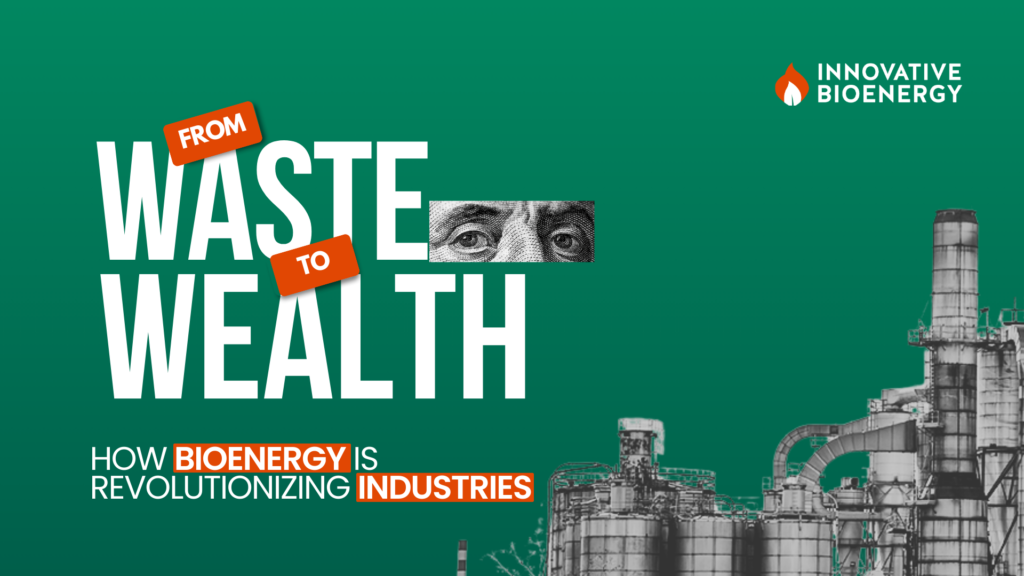Denmark is a world leader in renewable energy, with bioenergy at the core of its sustainable energy strategy. As countries worldwide strive to reduce carbon emissions and achieve energy independence, Denmark’s bioenergy success offers a powerful example of how small nations can harness local biomass resources to build a resilient and green energy system.
This case study explores Denmark’s effective bioenergy policies, innovative technologies, and community-driven approaches that have transformed its energy landscape. Small countries looking to develop renewable energy solutions, improve energy security, and promote rural economic growth can learn valuable lessons from Denmark’s bioenergy model to accelerate their clean energy transition.
Denmark’s Bioenergy Transformation
From Oil Dependency to Renewable Leadership
In the 1970s, Denmark depended on imported oil for nearly 90% of its energy needs. The oil crisis forced the country to rethink its energy strategy. As per Danish Energy Agency, Denmark invested heavily in renewable energy, with bioenergy becoming a cornerstone of its sustainable energy mix.
The Role of Bioenergy in the Renewable Mix
Bioenergy: The Backbone of Danish Renewables
- Largest Share of Renewables: According to IEA Bioenergy, Bioenergy accounts for over two-thirds of Denmark’s renewable energy supply, making it the largest contributor.
- Diverse Sources: Denmark’s bioenergy is derived from wood pellets, straw, biogas, biodiesel, bioethanol, and energy from waste.
- District Heating & CHP Plants: Many combined heat and power (CHP) plants and district heating systems have transitioned from coal to biomass.
- Economic Impact: The sector supports over 11,500 jobs and more than 1,200 companies, generating billions in revenue and exports.
Policy and Innovation Behind the Success
- Ambitious National Targets: Denmark aims for 100% renewable energy in all sectors by 2050 and a fossil-fuel-free electricity sector by 2035.
- Supportive Legislation: Feed-in tariffs, tax exemptions for biofuels, and blending mandates promote bioenergy use.
- Sustainability First: Denmark emphasizes the use of waste biomass and agricultural residues, avoiding carbon accounting loopholes.
- Continuous R&D: Investments in advanced technologies enable efficient biofuel production and the utilization of agricultural by-products.
Key Factors Behind Denmark’s Bioenergy Success
- Long-Term Vision: Clear targets backed by stable policy support.
- Integration with Agriculture: Farmers provide straw and manure for biogas, creating new income streams.
- Efficient Infrastructure: CHP and district heating systems optimize energy output.
- Public-Private Collaboration: Synergy among government, industry, and academia.
- Export and Innovation: Danish companies export bioenergy solutions worldwide.
What Small Countries Can Learn from Denmark
- Set Clear, Ambitious Goals
Define long-term targets for renewable energy and sustainability. - Build on Local Strengths
Utilize locally available biomass, agricultural waste, manure, forestry residues. - Invest in Infrastructure & Technology
Convert old plants to biomass, develop CHP systems and district heating (How District Heating Works). - Support Farmers & Communities
Incentivize farmers and promote rural bioenergy markets. - Prioritize Sustainability
Use waste or residue biomass responsibly, avoid over-reliance on energy crops. - Innovation & Partnerships
Fund R&D and encourage collaboration across sectors. - Share Knowledge Globally
Follow Denmark’s example by exporting expertise and supporting international cooperation.
Key Takeaways
- Denmark’s bioenergy success stems from clear policies, rural partnerships, and innovation.
- Small countries can replicate this by leveraging local resources and investing in efficient systems.
- Sustainability, community engagement, and global collaboration are essential.
Conclusion
Denmark’s bioenergy strategy proves that small nations can lead in renewable energy by aligning vision, policy, and local assets. By learning from Denmark, countries can build greener, more resilient energy systems, supporting climate goals while boosting rural economies and achieving energy independence.
In Pakistan, Innovative Bioenergy is putting these principles into action, converting local agricultural and industrial waste into clean, affordable energy. By focusing on sustainability, waste-to-energy conversion, and cost-effective fuel alternatives, Innovative Bioenergy is helping industries reduce emissions, lower operational costs, and contribute to a greener future. As Denmark’s success shows, with the right strategy and innovation, even developing countries can become leaders in the renewable energy transition.



